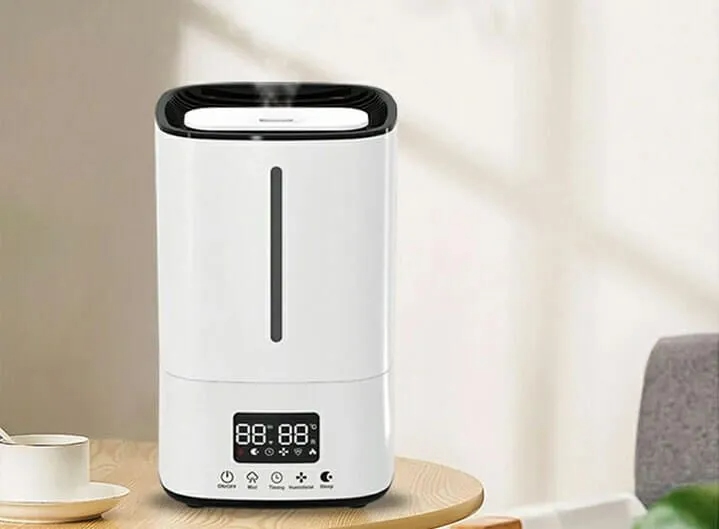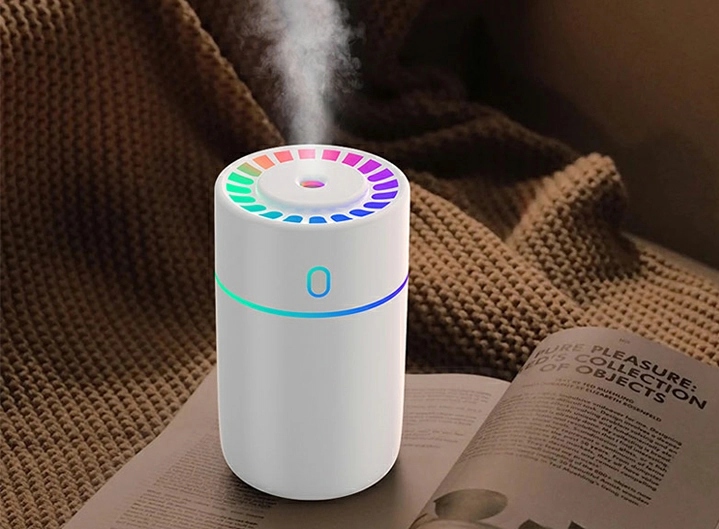
Got a humidifier humming in your room? They’re awesome for keeping the air comfy, soothing chapped lips, and helping you breathe easier. But if you’ve ever sniffed a musty odor or spotted some gross slime inside, you know things can go south fast without care. Let’s dive into how to clean and maintain your humidifier to keep mold and bacteria away. It’s not hard, and it keeps your air fresh. Ready? Let’s do this.
Humidifiers add moisture to the air. That’s what makes them great. But that damp vibe? It’s like a welcome mat for mold and germs. If you skip cleaning, those nasties get sprayed right into your space. That can tick off allergies or even mess with your breathing. The EPA warns that dirty humidifiers might cause “humidifier fever”—a flu-like feeling from breathing in gunk. Nobody wants that.
Imagine this: you’ve got a portable model like the CL26 running in your kid’s room to fight winter dryness. If you don’t clean it, tap water minerals pile up. That buildup becomes a cozy spot for bacteria. Research says about half of home humidifiers grow microbes if you don’t clean them weekly. Yuck, right? The good news? A simple routine stops that mess. Plus, it keeps your device working longer, so you’re not buying a new one every season.
Cleaning doesn’t have to feel like a big job. Split it into quick daily tasks and a deeper weekly scrub. First rule: unplug your humidifier. Safety always comes first.
Keep it easy to avoid trouble later. Here’s your daily to-do:
Pour out water: Dump any leftover water after you’re done. Stale water is mold’s buddy. Rinse the tank with fresh water to wash away gunk.
Wipe it clean: Use a soft cloth to dry the tank and base. Got a filter, like in some ultrasonic models? Give it a quick rinse if it’s reusable.
Let it dry: Leave parts open overnight. This keeps moisture from hiding in corners.
I messed this up once with my own desk humidifier. Forgot to empty it, and by morning, it smelled like a wet sock. Trust me, a quick five-minute routine saves you from that.
Once a week, get serious. Grab white vinegar—it’s cheap and works great on mineral buildup. You’ll also need a soft brush and maybe a bit of mild soap. Skip harsh cleaners; they can damage parts or leave weird smells.
Break it down: Take off the tank, cap, and any mist nozzles. Check the manual for your model. For example, the 1349S from Ideal Tech has a tank that pops right off.
Soak it: Mix equal parts water and vinegar. Fill the tank and let it sit for 30 minutes. It’ll loosen up scale. You’ll see bubbles as it works its magic.
Scrub gently: Use a bottle brush for tight spots. For the base, pour in some vinegar mix, let it soak, then wipe with a damp cloth.
Rinse well: Run cool water over everything until the vinegar smell’s gone. Don’t skip this—leftover vinegar can mess with the mist.
Dry completely: Towel off parts and let them air out for a few hours before putting it back together.
Got a filter? Swap it every 1-3 months, depending on use. Some folks swear by distilled water to cut down on mineral deposits. It’s pricier, but if your tap water’s hard, it’s worth it.
| Cleaning Frequency | Tasks | Tools Needed |
| Daily | Empty, rinse, wipe | Soft cloth, fresh water |
| Weekly | Soak, scrub, rinse | White vinegar, soft brush |
| Monthly | Check or replace filter | Replacement filter if needed |
This table makes it clear. Bigger tanks, like the 5L in Ideal Tech’s 1213S, might need a bit more soaking time.
Cleaning’s just the start. Good habits keep your humidifier in check. Here’s how to stay on top:
Stick to clean water: Tap water works for most people. But if your water’s hard, try filtered or distilled. It stops that white dust from settling on your stuff.
Store it dry: Done for the season? Clean and dry every part before stashing it. I learned this the hard way—stored a damp humidifier once and found black spots later. Gross.
Use smart settings: Too much moisture invites mold. Keep indoor humidity at 30-50%. Models like Ideal Tech’s HBL-01 have auto-shutoff to prevent overdoing it.
Try a safeguard: Some humidifiers let you add bacteriostatic agents. Check your model first. Ultrasonic ones, like the 5SB, need extra attention since they don’t heat water to zap germs.
Live in a humid area? You might not need to run your humidifier on muggy days. It’s all about balance.
Everybody screws up now and then. Here’s what to watch out for, based on slip-ups I’ve seen (and made):
Don’t ditch vinegar: Bleach might seem like a quick fix, but it can wreck plastics or leave fumes. Stick with vinegar—it’s safe and works.
Read the manual: Every humidifier’s different. The 5SB, for example, has a battery, so don’t soak the whole thing.
Don’t run it dry: That’s a fast way to burn out the motor. Check water levels before you hit start.
Clean vents and fans: Dust clogs them, slowing things down. A quick vacuum keeps them clear.
A friend of mine ran their humidifier for months without cleaning. Ended up with pink slime everywhere. It’s nasty but easy to avoid with a little effort.

Let’s give a quick shoutout to Ideal Tech Co., Ltd. They’re a solid humidifier maker based in Guangdong. They handle everything—design, production, you name it—all in one place. That keeps their prices fair and quality top-notch. Their lineup, like the CL26 or 1213S, comes with neat features like colorful lights or big 5L tanks. They’ve got certifications like CE, ROHS, and FCC, so their stuff meets global standards. They’ve worked with big retailers across the US, Europe, and Asia. Whether you want a small car humidifier or a beefy home unit, their products are durable and easy to clean.
Keeping your humidifier clean isn’t a big deal. A quick daily rinse and a weekly scrub keep mold and bacteria out. Toss in some smart habits—like using clean water or the right settings—and you’re set. Your air stays fresh, and your device lasts longer. Give it a shot this week. You’ll notice the difference.
Rinse and wipe it daily. Then, once a week, do a full clean with vinegar. Using it a ton, like in a dry office? Maybe deep clean every few days. That stops mold and germs from moving in.
Tap water’s fine for most models. But hard water leaves mineral gunk that can trap bacteria. Seeing white dust on your furniture? Switch to distilled. Either way, regular cleaning keeps mold away.
Unplug it first. Take it apart. Soak moldy parts in a vinegar-water mix for an hour. Scrub lightly, rinse well, and dry everything. For Ideal Tech’s CL26, this works without harming the lights or tank.
You bet. Vinegar’s natural and gets the job done. Use distilled water and air dry daily for an easy approach. Some folks add a drop of tea tree oil for its germ-killing power, but test it first to avoid clogs.
It can make it last years instead of months. A clean unit runs smoothly, avoiding strain from buildup. People using Ideal Tech’s portable models say they get 2-3 years with good care, versus one season if neglected.